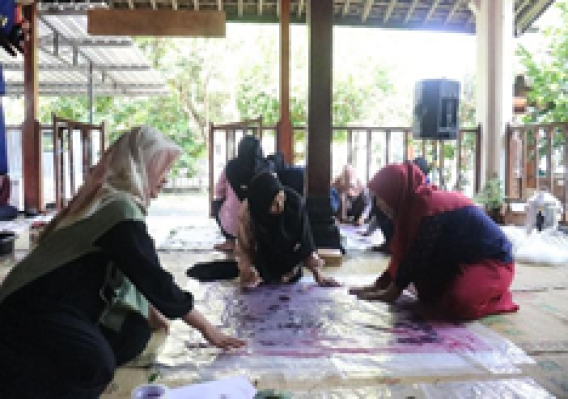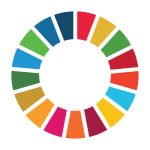Hijab Ecoprint: A New Path to Women’s Empowerment in the “Kampung Emas” of Seyegan

A number of housewives and micro-small-medium enterprise (MSME) actors in Kampung Emas Krapyak IX, Seyegan, Sleman, participated in training on making ecoprint-patterned hijabs as an effort to enhance skills and economic independence. This activity is part of UNY’s community service programme focused on women’s empowerment through environmentally-friendly techniques and based on local wisdom. Kampung Emas Seyegan has been one of UNY’s assisted villages since 2023, serving as a society-empowerment laboratory. The ecoprint hijab training was chosen because it matched the residents’ needs and potential—especially the women who mostly work as housewives with basic education. Ecoprint, a fabric printing technique using leaves and natural dyes, is considered easy to learn, has artistic value, and high economic potential.
The training was carried out by a team of lecturers and students from the Department of Vocational Education, especially the Applied Bachelor Programme in Fashion Design at UNY. The team consisted of Dr Nur Kholifah, M.Pd. (leader), Triyanto, M.Pd., Resi Sepsilia Elvera, M.Pd., Windu Wulan Sari, M.Pd., Linda Kartika Sari, M.Pd., Noorvita Kurnia Hayati, M.Pd., Fitria Oktariani, M.Pd., Desnanda Putri Sagita, M.Pd., and Lia Pramesti, M.Pd. Six students also assisted in technical support and communication with participants. “We designed this training as a gateway so that the community, especially women, acquire new, applicable, economically-valuable skills. Ecoprint hijab is a product that is close to everyday life and easy to market,” said Dr Nur Kholifah on Tuesday (15/7/25). The training lasted several days with a Participatory Action Research (PAR) approach, from needs identification, planning, training, mentoring, to evaluation.
Participants were invited to understand the basic ecoprint techniques, from leaf selection, fabric pre-treatment, to steaming technique. Not only did they practice making hijab motifs, but they were also equipped with digital marketing strategy materials so that their products could penetrate online markets.
During the practice process, participants showed high enthusiasm. They experimented with motifs from teak, jatropha, and guava leaves. The result was hijabs with unique and artistic natural motifs. Product assessment was based on motif precision, colour composition, neatness of design, and uniqueness, with an average score above 4.3 on a scale of 5. “We just realised that the leaves around our home can be turned into a beautiful hijab. I’m excited to make and sell again,” said Rina, one of the training participants. The UNY team of lecturers and students also actively assisted participants during all stages. Each team member had strategic roles in module preparation, technical assistance, to marketing strategy planning. This collaboration strengthened empowerment processes based on science while also taking a humanistic approach. This programme is proof of UNY’s concrete role in realising “UNY Berdampak” and “Dikti Saintek Berdampak” through real community empowerment.
Ecoprint hijab becomes a symbol that local creativity can become a new economic source, while also building confidence among village women to be independent. In the future, the training is planned to be developed into a group enterprise and to educate eco-friendly textile tourism. The team hopes that the acquired skills can continue to be practised and enhanced through further mentoring and product training such as scarves, bags, and other accessories.






